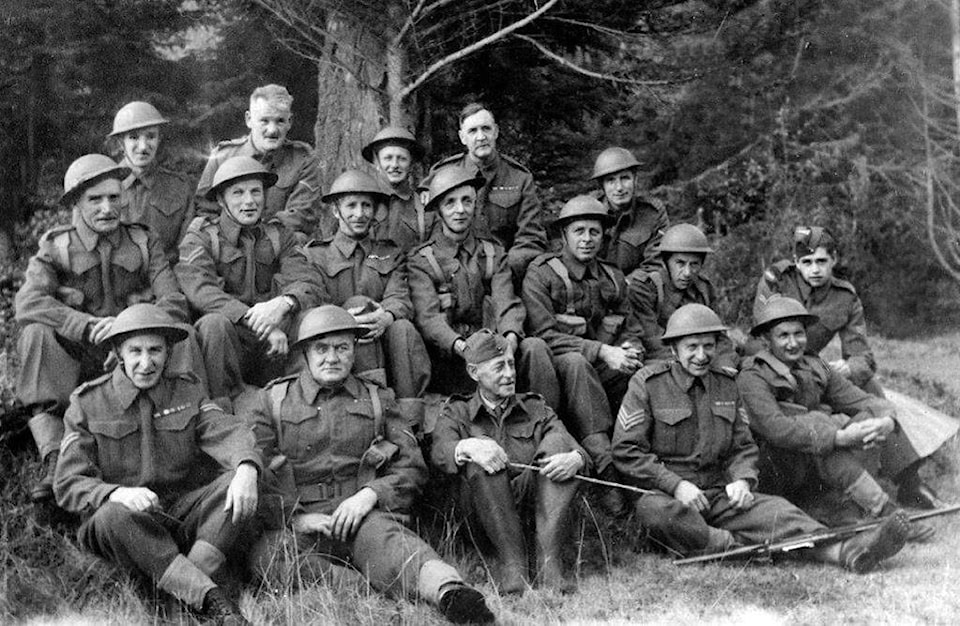Elida Peers | Contribued
Seventy-five years ago D-Day, the invasion of Normandy took place, initiating the turn of World War II, in favour of the Allied Forces.
Here on the home front, we kids (I was 12 that year) were used to food rationing, gas rationing, keeping blackout curtains on the windows at night, and air raid warning sirens.
From time to time, bad news arrived in the community, as we all shared in the loss of another young man, among our families and friends.
Among many home front groups that took roles and protective activities in that period were the local Army Reserve Corps and South Vancouver Island Rangers. The photo shows the Army Reserve Corps, photographed while on a weekly practice session in Saseenos.
The five fellows in the back row are Rupert Soule, Denis Lavender, Ernest Welsh, A. Hadgkiss, John Martin, Sr. The middle row shows Ernest Pontious, Frank Rumsby, Peter Wadams, Leonard Hewlett, Stanley Giles, Albert Constant, Jack Myers. In front are ?? Mitchell, Scott Robinson, Captain J. B. Gillett - Sooke Platoon commander, Fred Thornber and Kai Jensen.
When you see Soule Road (off Sooke River Road) it is for Rupert’s family that it has its name. Denis Lavender was an ex-police officer who became a magistrate; Ernie Welsh is the man who gave Moss Cottage to the museum, and John Martin Sr., started the Boy Scouts in Sooke. The Pontious family farmed in the Caldwell Road area; Frank Rumsby was an electrician who raised a family of electricians; and Peter Wadams of course makes you think of Sooke’s new street, Wadams Way. The Hewletts farmed on Woodlands Road, businessman Fred Thornber became a justice of the peace, and Kai Jensen ran a dairy farm in Saseenos.
Retired army officer Capt. Gillett lived on Kaltasin Road and in the wintertime of the early 1940s drove his four-door sedan as a “school bus” to transport the younger children from Saseenos up to Sooke school.
The Sooke Region Museum has a copy of correspondence from him as Sooke platoon commander, expressing appreciation to the Dufferin and Haldimand Rifles who were stationed at the Otter Point Camp.
None of us will forget the relief, when VE Day finally came on May 8, 1945.
•••
Elida Peers is the historian of the Sooke Region Museum.
